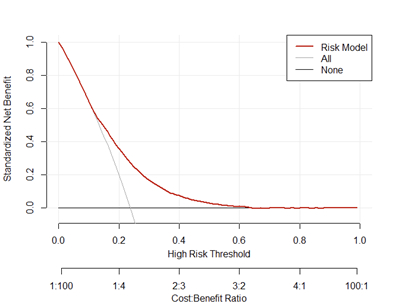Final ID: Su3069
A Machine Learning Readmission Risk Prediction Model for Cardiac Disease
Abstract Body (Do not enter title and authors here): Introduction
Circulatory disease ranks ninth highest amongst all-cause US readmissions, and despite an increase in quality improvement initiatives, emergency department visits have increased. Diagnosis specific cardiac machine learning readmission risk prediction models have been created, and at least one general readmission risk model has demonstrated a 25% relative readmission rate reduction in a focused setting.
Hypothesis/Aims
The objective of this study was to create a high performing 30-day hospital readmission/emergency department (ED) visit or death risk prediction model. We hypothesized that the model would perform equitably and with high accuracy.
Methods
The model was derived from a cohort of acute, cardiac inpatient admissions during 2010-2023 within ten integrated Midwestern hospitals. Encounters in which patients died or were discharged to hospice were excluded. A total of 1,498 clinical and non-clinical predictors were included in three machine learning models. Primary composite outcome was 30-day hospital readmission/ED visit or death.
Results
The primary outcome rate was 23.8% and ED visit rate was 7.7% amongst 73,926 encounters spanning 49,144 patients. Heart failure, dysrhythmias, and acute myocardial infarction were the most common readmission diagnoses. XGBoost had the overall highest performance (AUROC of 0.691 and PR-AUC of 0.4158). At a precision of 0.5, XGBoost demonstrated a net benefit relative to current practice. Top predictors include the LACE index and total hospitalized days in the past year. The DeLong test yielded a significant difference in model performance between men and women.
Conclusions
We successfully built a 30-day cardiac readmission/ED visit or death risk prediction model that demonstrated a net benefit relative to current practice. The difference in model performance could be driven by gender gaps in cardiac disease recognition, presentation, and treatment. Future directions include external model validation.
Circulatory disease ranks ninth highest amongst all-cause US readmissions, and despite an increase in quality improvement initiatives, emergency department visits have increased. Diagnosis specific cardiac machine learning readmission risk prediction models have been created, and at least one general readmission risk model has demonstrated a 25% relative readmission rate reduction in a focused setting.
Hypothesis/Aims
The objective of this study was to create a high performing 30-day hospital readmission/emergency department (ED) visit or death risk prediction model. We hypothesized that the model would perform equitably and with high accuracy.
Methods
The model was derived from a cohort of acute, cardiac inpatient admissions during 2010-2023 within ten integrated Midwestern hospitals. Encounters in which patients died or were discharged to hospice were excluded. A total of 1,498 clinical and non-clinical predictors were included in three machine learning models. Primary composite outcome was 30-day hospital readmission/ED visit or death.
Results
The primary outcome rate was 23.8% and ED visit rate was 7.7% amongst 73,926 encounters spanning 49,144 patients. Heart failure, dysrhythmias, and acute myocardial infarction were the most common readmission diagnoses. XGBoost had the overall highest performance (AUROC of 0.691 and PR-AUC of 0.4158). At a precision of 0.5, XGBoost demonstrated a net benefit relative to current practice. Top predictors include the LACE index and total hospitalized days in the past year. The DeLong test yielded a significant difference in model performance between men and women.
Conclusions
We successfully built a 30-day cardiac readmission/ED visit or death risk prediction model that demonstrated a net benefit relative to current practice. The difference in model performance could be driven by gender gaps in cardiac disease recognition, presentation, and treatment. Future directions include external model validation.
More abstracts on this topic:
A Novel Machine Learning-based Adverse Cardiovascular Events Risk Algorithm For Cancer Patients Treated With Tyrosine Kinase Inhibitors
Wahi Shawn, Cross James, Mora Ruben, Im Yunju, Kwan Jennifer
Absence of standard modifiable risk factors (SMuRF-less) among 5002 Middle Eastern patients with atherosclerotic cardiovascular disease: (Interim analysis from the Jo-SMuRF Study)Aldalal'ah Mo'men, Hammoudeh Ayman, Hamza Ibrahem, Alqudah Mohammad, Khasawneh Hasan, Alomari Sawsan, Alomari Ahmad, H. Assaf Sarah, Zaqqa Ayah, Khatatbeh Moawiah

